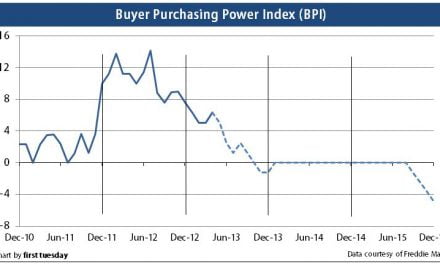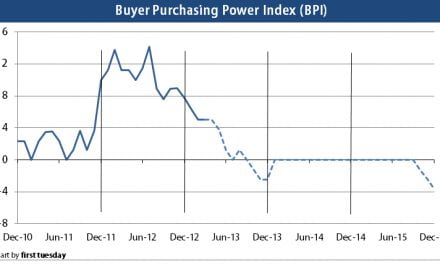Fixed rate mortgage (FRM) rates are at their lowest level since 2012, when the 30-year FRM rate bottomed at 3.3%.
The average 30-year FRM rate is 3.65% as of the week ending February 19, 2016, according to Freddie Mac. However, this rate ought to be much lower.
Why? It has to do with the 10-year Treasury note (T-note) rate.
Lenders set FRM rates by comparing the investment return currently offered by other long-term investments. The standard investment comparison is the 10-year T-note, offered by the U.S. Department of Treasury. This rate fluctuates based on investor demand for the note. The rate:
- increases when demand is low; and
- decreases when demand is high.
In 2016, demand for the 10-year T-note is very, very high. Foreign investors in particular are in search of safe investment instruments in which to park their money during the financial chaos ensuing throughout much of the globe. Therefore, they are willing to accept a lower return (read: lower interest rate) on the 10-year T-note in exchange for the security offered.
The same week the 30-year FRM rate averaged 3.65% the 10-year T-Note averaged 1.71%, according to Bankrate. Therefore, the difference between the two rates is 1.94 points — a greedy spread for the bond market.
The typical spread between the two rates is around 1.5 percentage points, viewed in the chart above. This spread covers the higher risk inherent with mortgages, called the risk premium. While the U.S. Treasury does not default on its T-notes, mortgage holders sometimes do default, so a higher return is needed to make the investment in mortgages worthwhile.
This spread peaked quickly in the second half of 2008, as the bond market prepared for the coming foreclosure crisis. It bottomed below 1.4% in 2010. Following the uptick in mortgage originations in 2010 (due to the Federal homebuying tax stimulus), the spread briefly jumped above 2% in 2011 before dropping closer to historic norms in 2012.
In 2012-2015, it remained around 1.6% — still above normal, but at least stable. However, today’s nearly two percentage point spread is a mystery. What is causing the bond market to demand such high returns over and above the typical spread?
One possibility is that Wall Street bankers expect mortgage default rates to rise in the next year (See 2008).
Another less likely possibility is that bankers did not react quickly enough to the dropping 10-year T-note rate, or think the past couple of weeks of low T-note rates have been an anomaly. However, Wall Street is rarely accused of being slow.
Yet another potential reason why the spread has recently increased is that Wall Street is striking back at regulators (take that, American People!). The Federal government keeps piling on the regulations, making banks buy back bad loans and the like, so why not increase the risk premium?
More likely, the bond market is in panic mode. Paul Krugman recently explained:
What plunging rates tell us is that markets are expecting very weak economies and possibly deflation for years to come, if not full-blown crisis.
The stock market is faltering, oil prices are diving and investors are desperate to buy U.S. Treasuries, even though the returns are currently just slightly better than a savings account. All of this points to a lack of investor confidence in the economy. Therefore, investors prefer a higher risk premium for mortgage rates.
After all, in demanding higher returns, it’s not like investors are increasing mortgage interest rates, which may cause fewer mortgage originations. In fact, the average FRM rate has fallen over the past few weeks (but the 10-year T-note has fallen more steeply).
Check out the current spread between the 30-year FRM and 10-year T-note rate here. It may tell you something about Wall Street greed. It also might give you some insight into the bond market’s confidence, or lack thereof, in the mortgage market.
All that said, don’t let today’s elevated spread concern you too much. While the global economy struggles, California’s housing market is doing alright. Job growth is solid in the state, having surpassed pre-recession levels at the end of 2014. Home sales volume and prices continue to rise, and are likely to get a boost from today’s low mortgage rates.
This points to a modest economic expansion in 2016. When FRM rates do rise — and they will, likely towards the end of 2016 — sales volume and pricing will momentarily fall back. But pent up demand from Generation Y will push home sales to the next boom at the end of this decade, pulling California’s economy higher in its wake.















